
Blue shark and yellowtail in the open ocean.
Species: North pacific yellowtail, Yellowtail, Kingfish, Prionace glauca, Seriola lalandi
Location: San Diego, California
Image ID: 01000
Species: North pacific yellowtail, Yellowtail, Kingfish, Prionace glauca, Seriola lalandi
Location: San Diego, California
Image ID: 01000

Blue shark and offshore drift kelp paddy, open ocean.
Species: Blue shark, Macrocystis pyrifera, Prionace glauca
Location: San Diego, California
Image ID: 01078
Species: Blue shark, Macrocystis pyrifera, Prionace glauca
Location: San Diego, California
Image ID: 01078
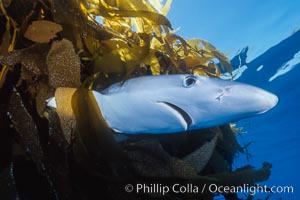
Blue shark and offshore drift kelp paddy, open ocean.
Species: Blue shark, Macrocystis pyrifera, Prionace glauca
Location: San Diego, California
Image ID: 01081
Species: Blue shark, Macrocystis pyrifera, Prionace glauca
Location: San Diego, California
Image ID: 01081

The leafy seadragon (Phycodurus eques) is found on the southern and western coasts of Australia. Its extravagent appendages serve only for camoflage, since it has a nearly-invisible dorsal fin that propels it slowly through the water. The leafy sea dragon is the marine emblem of South Australia.
Species: Leafy seadragon, Phycodurus eques
Location: Rapid Bay Jetty, South Australia
Image ID: 39134
Species: Leafy seadragon, Phycodurus eques
Location: Rapid Bay Jetty, South Australia
Image ID: 39134

Pyrosome drifting through a kelp forest, Catalina Island. Pyrosomes are free-floating colonial tunicates that usually live in the upper layers of the open ocean in warm seas. Pyrosomes are cylindrical or cone-shaped colonies made up of hundreds to thousands of individuals, known as zooids.
Location: Catalina Island, California
Image ID: 37166
Location: Catalina Island, California
Image ID: 37166

Brandt's cormorant cormorant in flight.
Species: Brandt's Cormorant, Phalacrocorax penicillatus
Location: La Jolla, California
Image ID: 37628
Species: Brandt's Cormorant, Phalacrocorax penicillatus
Location: La Jolla, California
Image ID: 37628

Sandhill Cranes in Flight at Sunrise, Bosque del Apache NWR. At sunrise, sandhill cranes will fly out from the pool in which they spent the night to range over Bosque del Apache NWR in search of food, returning to the pool at sunset.
Species: Sandhill crane, Grus canadensis
Location: Bosque del Apache National Wildlife Refuge, Socorro, New Mexico
Image ID: 38733
Species: Sandhill crane, Grus canadensis
Location: Bosque del Apache National Wildlife Refuge, Socorro, New Mexico
Image ID: 38733

California Sea Lion mother with her pup, mother has injury, open wound, La Jolla, California.
Species: California sea lion, Zalophus californianus
Location: La Jolla, California
Image ID: 36583
Species: California sea lion, Zalophus californianus
Location: La Jolla, California
Image ID: 36583

Newport Pier, underneath the pier, pilings and ocean.
Location: Newport Beach, California
Image ID: 28471
Location: Newport Beach, California
Image ID: 28471

Magellanic penguins, coming ashore on a sandy beach. Magellanic penguins can grow to 30" tall, 14 lbs and live over 25 years. They feed in the water, preying on cuttlefish, sardines, squid, krill, and other crustaceans.
Species: Magellanic penguin, Spheniscus magellanicus
Location: New Island, Falkland Islands, United Kingdom
Image ID: 23924
Species: Magellanic penguin, Spheniscus magellanicus
Location: New Island, Falkland Islands, United Kingdom
Image ID: 23924

Wandering albatross in flight, over the open sea. The wandering albatross has the largest wingspan of any living bird, with the wingspan between, up to 12' from wingtip to wingtip. It can soar on the open ocean for hours at a time, riding the updrafts from individual swells, with a glide ratio of 22 units of distance for every unit of drop. The wandering albatross can live up to 23 years. They hunt at night on the open ocean for cephalopods, small fish, and crustaceans. The survival of the species is at risk due to mortality from long-line fishing gear.
Species: Wandering albatross, Diomedea exulans
Location: Southern Ocean
Image ID: 24071
Species: Wandering albatross, Diomedea exulans
Location: Southern Ocean
Image ID: 24071

King penguin, showing ornate and distinctive neck, breast and head plumage and orange beak.
Species: King penguin, Aptenodytes patagonicus
Location: Fortuna Bay, South Georgia Island
Image ID: 24581
Species: King penguin, Aptenodytes patagonicus
Location: Fortuna Bay, South Georgia Island
Image ID: 24581
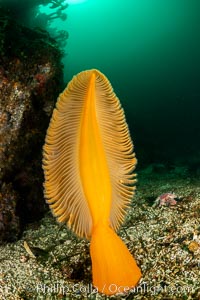
Fleshy Sea Pen, Ptilosarcus gurneyi, Vancouver Island.
Species: Fleshy sea pen, Ptilosarcus gurneyi
Location: British Columbia, Canada
Image ID: 35334
Species: Fleshy sea pen, Ptilosarcus gurneyi
Location: British Columbia, Canada
Image ID: 35334

South American sea lions underwater, Otaria flavescens, Patagonia, Argentina.
Species: South American Sea Lion, Otaria flavescens
Location: Puerto Piramides, Chubut, Argentina
Image ID: 38267
Species: South American Sea Lion, Otaria flavescens
Location: Puerto Piramides, Chubut, Argentina
Image ID: 38267
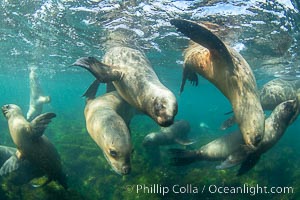
South American sea lions underwater, Otaria flavescens, Patagonia, Argentina.
Species: South American Sea Lion, Otaria flavescens
Location: Puerto Piramides, Chubut, Argentina
Image ID: 38268
Species: South American Sea Lion, Otaria flavescens
Location: Puerto Piramides, Chubut, Argentina
Image ID: 38268

South American sea lion underwater, Otaria flavescens, Patagonia, Argentina.
Species: South American Sea Lion, Otaria flavescens
Location: Puerto Piramides, Chubut, Argentina
Image ID: 38271
Species: South American Sea Lion, Otaria flavescens
Location: Puerto Piramides, Chubut, Argentina
Image ID: 38271

South American sea lions underwater, Otaria flavescens, Patagonia, Argentina.
Species: South American Sea Lion, Otaria flavescens
Location: Puerto Piramides, Chubut, Argentina
Image ID: 38272
Species: South American Sea Lion, Otaria flavescens
Location: Puerto Piramides, Chubut, Argentina
Image ID: 38272

Whale shark opens mouth wide to slurp clouds of mysid shrimp and krill, Rhincodon typus, Bahia de los Angeles, Sea of Cortez, Mexico.
Species: Whale shark, Rhincodon typus
Location: Bahia de los Angeles, Baja California, Mexico
Image ID: 40478
Species: Whale shark, Rhincodon typus
Location: Bahia de los Angeles, Baja California, Mexico
Image ID: 40478

Young California Sea Lions at Play Underwater in the Coronado Islands, Mexico. Pups spend much of their time playing with one another in the water, strengthening their swimming skills and mock jousting.
Species: California sea lion, Zalophus californianus
Location: Coronado Islands (Islas Coronado), Baja California, Mexico
Image ID: 40723
Species: California sea lion, Zalophus californianus
Location: Coronado Islands (Islas Coronado), Baja California, Mexico
Image ID: 40723

Young California Sea Lions at Play Underwater in the Coronado Islands, Mexico. Pups spend much of their time playing with one another in the water, strengthening their swimming skills and mock jousting.
Species: California sea lion, Zalophus californianus
Location: Coronado Islands (Islas Coronado), Baja California, Mexico
Image ID: 40724
Species: California sea lion, Zalophus californianus
Location: Coronado Islands (Islas Coronado), Baja California, Mexico
Image ID: 40724

Young California Sea Lions at Play Underwater in the Coronado Islands, Mexico. Pups spend much of their time playing with one another in the water, strengthening their swimming skills and mock jousting.
Species: California sea lion, Zalophus californianus
Location: Coronado Islands (Islas Coronado), Baja California, Mexico
Image ID: 40725
Species: California sea lion, Zalophus californianus
Location: Coronado Islands (Islas Coronado), Baja California, Mexico
Image ID: 40725

A mother California sea lion (bottom) and her pup (top), underwater at the Coronado Islands, Mexico. Mothers and pups spend much time together with the mother teaching her young padawan learner how to pursue prey.
Species: California sea lion, Zalophus californianus
Location: Coronado Islands (Islas Coronado), Baja California, Mexico
Image ID: 40732
Species: California sea lion, Zalophus californianus
Location: Coronado Islands (Islas Coronado), Baja California, Mexico
Image ID: 40732

Young California Sea Lions at Play Underwater in the Coronado Islands, Mexico. Pups spend much of their time playing with one another in the water, strengthening their swimming skills and mock jousting.
Species: California sea lion, Zalophus californianus
Location: Coronado Islands (Islas Coronado), Baja California, Mexico
Image ID: 40738
Species: California sea lion, Zalophus californianus
Location: Coronado Islands (Islas Coronado), Baja California, Mexico
Image ID: 40738
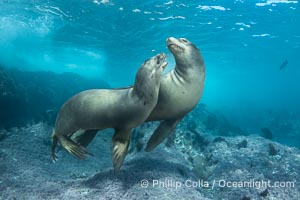
A mother California sea lion (right) and her pup (left), underwater at the Coronado Islands, Mexico. Mothers and pups spend much time together with the mother teaching her young padawan learner how to pursue prey.
Species: California sea lion, Zalophus californianus
Location: Coronado Islands (Islas Coronado), Baja California, Mexico
Image ID: 40739
Species: California sea lion, Zalophus californianus
Location: Coronado Islands (Islas Coronado), Baja California, Mexico
Image ID: 40739
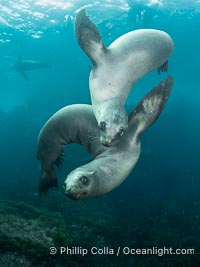
Young California Sea Lions at Play Underwater in the Coronado Islands, Mexico. Pups spend much of their time playing with one another in the water, strengthening their swimming skills and mock jousting.
Species: California sea lion, Zalophus californianus
Location: Coronado Islands (Islas Coronado), Baja California, Mexico
Image ID: 40755
Species: California sea lion, Zalophus californianus
Location: Coronado Islands (Islas Coronado), Baja California, Mexico
Image ID: 40755

California sea lion pup with open mouth inspecting the dome port on my underwater camera, Baja California, Mexico.
Species: California sea lion, Zalophus californianus
Location: Coronado Islands (Islas Coronado), Baja California, Mexico
Image ID: 40757
Species: California sea lion, Zalophus californianus
Location: Coronado Islands (Islas Coronado), Baja California, Mexico
Image ID: 40757
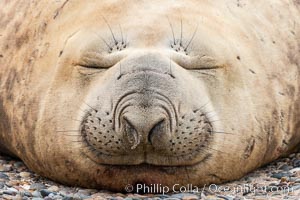
Southern elephant seal, Mirounga leonina, Valdes Peninsula, Argentina.
Species: Southern elephant seal, Mirounga leonina
Location: Puerto Piramides, Chubut, Argentina
Image ID: 35946
Species: Southern elephant seal, Mirounga leonina
Location: Puerto Piramides, Chubut, Argentina
Image ID: 35946

Southern elephant seal, adult male, Mirounga leonina, Valdes Peninsula, Argentina.
Species: Southern elephant seal, Mirounga leonina
Location: Puerto Piramides, Chubut, Argentina
Image ID: 35947
Species: Southern elephant seal, Mirounga leonina
Location: Puerto Piramides, Chubut, Argentina
Image ID: 35947

Southern elephant seal, adult male, Mirounga leonina, Valdes Peninsula, Argentina.
Species: Southern elephant seal, Mirounga leonina
Location: Puerto Piramides, Chubut, Argentina
Image ID: 35948
Species: Southern elephant seal, Mirounga leonina
Location: Puerto Piramides, Chubut, Argentina
Image ID: 35948

Magellanic penguin in its burrow, Spheniscus magellanicus, Patagonia, Argentina.
Species: Magellanic penguin, Spheniscus magellanicus
Location: Puerto Piramides, Chubut, Argentina
Image ID: 35949
Species: Magellanic penguin, Spheniscus magellanicus
Location: Puerto Piramides, Chubut, Argentina
Image ID: 35949